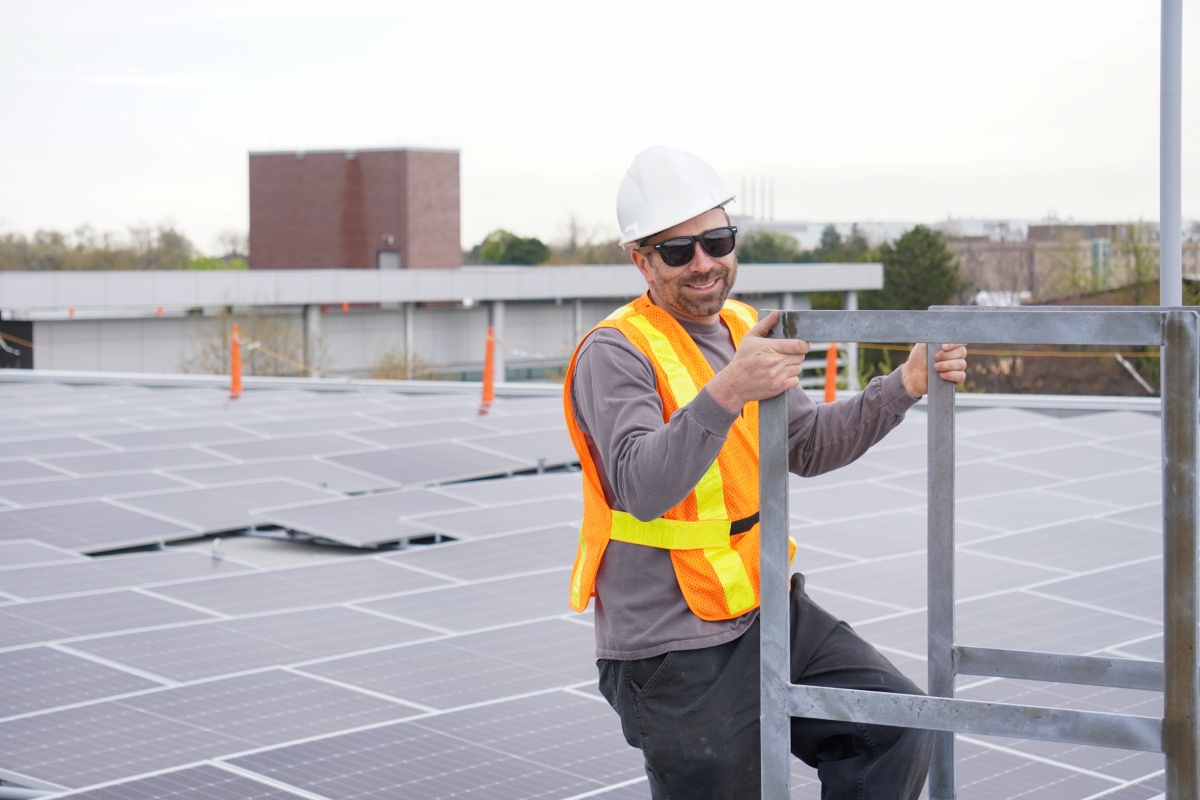From sawmills to shellfish: Shift Energy Group solves energy issues for B.C. industries

Shift Energy Group is a comprehensive clean energy solution provider in British Columbia and beyond. Tailoring custom solar and energy storage solutions for clients saves both on energy charges and lightens their demand load on the BC Hydro grid, largely dependent on fossil fuels in the North.
Shift Energy Group has been in operation for 15 years and now claims the title of largest solar power installer in the province, with projects ranging from residential and commercial to off grid. The company has installed projects in BC, Alberta, Ontario, New Brunswick and Nova Scotia, using a mix of technology and tailored site designs. We chatted with the team about some of their recent, challenging projects, and how the clean technology investment tax credit (ITC) has played out so far.
Reducing industrial load with solar
In one recent project, Shift helped Canadian Bavarian Millwork and Lumber (CanBav), in Chemainus, BC, add solar and battery storage to its factory to give up natural gas and to help reduce their overall load demand under a utility subsidy program. “CanBav has been committed to environmental and community values for decades. Some 20 years ago, we started moving to a greener way of powering our operation,” says CanBav owner and operator Georg Wörnle.
“We added biomass boilers, completely moving away from natural gas. More recently, BC Hydro supported a large LED lighting retrofit which was followed by the electrification of our forklift fleet. And after that, the next step was solar. We want to be as renewable as possible,” Wörnle said in a Shift project summary.
“Canadian Bavarian had been talking to us about adding solar for a few years,” said Shift founder and President, Colyn Strong, in the same summary. “For a long time, the high capital cost meant the payback for large rate consumers was too long. We were excited when BC Hydro reached out to see if we had any projects for piloting load displacement that they could support. Every load displacement project requires a lot of planning because we’re not allowed to supply power back to BC Hydro. We needed to consider what the facility was consuming, analyze the usage patterns, then design a solar solution to best match the demand on site.”
The new solar array is expected to produce more than 50% of CanBav’s annual energy needs, displacing a lot of load drawn from BC Hydro. The battery addition, under the utility’s energy storage incentive, will help save another 10% to 15%, Colyn said. All these additions are expected to reduce demand by almost 80% cumulatively, he calculates.
Shift transforms a solar barge
In an off-grid project, Shift helped TXIT Shellfish Company convert its oyster barge from a gasoline generator to a solar + battery system. Owned by the T’sou-ke First Nation, the company manages an oyster farm in the Sooke Basin, on Southern Vancouver Island. Oysters there are raised from seedlings.
Until recently, the TXIT used a medium-sized gasoline generator to operate the barge to sort, clean and grade oysters. The company then won a federal grant from the Fisheries and Aquaculture Clean Technology Adoption Program to help finance the marine floating off-grid solar power conversion, TXIT farm manager Blake Barton said in a project description.
“Burning gasoline’s not good for the environment, and it’s expensive too, when you consider the cost of running 25-gallon jerry cans of gasoline out to the barge to keep the equipment running,” noted Steve Unger, a lead engineer for Shift.
TXIT is a committed member of Ocean Wise, seeking to augment sustainable practices over the near term. The Minister of Fisheries, Oceans last year announced more than $3.5 million in funding for 18 clean aquaculture initiatives in Canada, including five in B.C.
Government tax incentives survive in Canada
Shift also helped Canadian Bavarian identify significant tax savings. “The clean technology Investment Tax Credit (ITC) allows companies investing in renewable energy and energy storage projects to recoup 30% of their capital costs as a refundable tax credit,” said Colyn.
“Similarly, the Accelerated Capital Cost Allowance (ACCA) allows investors an accelerated write-off on certain equipment used to produce energy from alternative renewable sources. This might mean up to 50% savings on the capital cost of commercial solar projects depending on the client’s tax bracket,” he said.
These incentives have helped the solar and storage market across Canada to thrive. Over the past five years in Canada, nearly 2 GW of new utility-scale solar and more than 600 MW of C&I-plus-residential solar has been added, reckons the Canadian Renewable Energy Association (CanREA).
More than 200 MW of new energy storage has also been installed, the association counts. Currently there are more than 43,000 solar energy installations on residential, commercial and industrial rooftops, it notes.
The future will be even brighter, CanREA suggests. “Canadian jurisdictions can expect to connect at least 10,000 MW of new wind, solar and storage by the start of 2030, according to CanREA’s Clean Energy Procurement Calendar, said Vittoria Bellissimo, President and CEO of the association, in a recent outlook statement.





Comments are closed here.